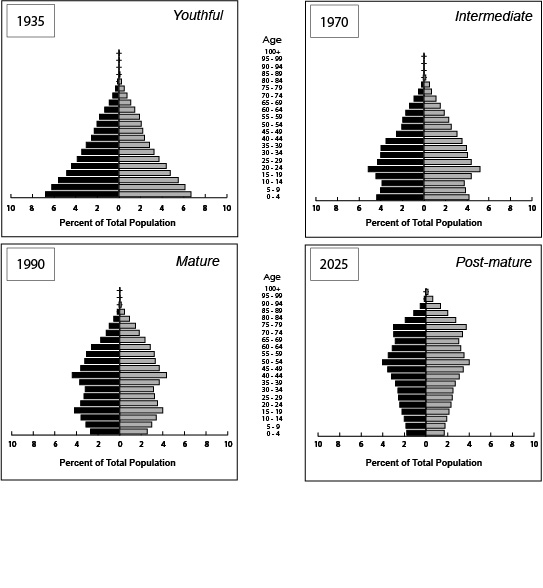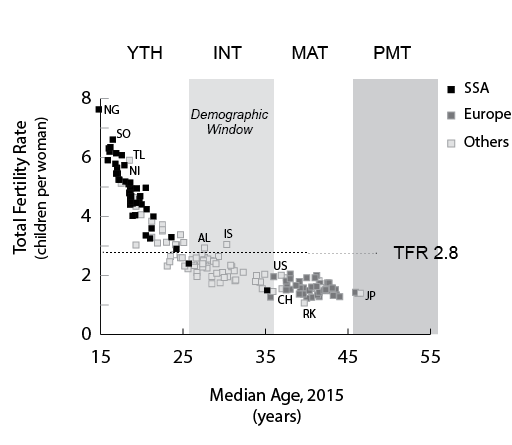
Introduced by UN demographers during the Population Division’s release of a series of long-range projections (UNPD 2004, 2, 70-73), the original intent of the demographic window was to call attention to the segment of the age-structural transition that tends to measurably favor economic development. In its original formulation, UN demographers assumed that this window occurs when both children (0 to 14 years) and seniors (65 and older)—age groups that are composed principally of dependents—are at a low ebb. However, unlike other measures of dependency, in the UNPD’s formulation, children and seniors are differentially weighted; each senior is assumed to represent twice the per-child burden on economic development. According to this method, the demographic window is deemed open when children comprise less than 30 percent of the total population, and simultaneously, seniors comprise less than 15 percent of the total population.

Despite its seemingly arbitrary rules and speculative boundaries, in practice the UNPD’s demographic window has done well identifying conditions during which states achieve the World Bank’s upper-middle income classification, a milestone in development. For example, among the World Bank’s 2018 list of upper-middle income states, all are either in the UNPD’s demographic window or have passed through it (World Bank, 2019). The remainder are either significant oil and/or mineral exporters or have a population under 5.0 million—a group that includes numerous island states with exceptional per-capita tourist revenue and/or remittances.
Coupled with the UNPD’s demographic estimates and projections, the analytical usefulness of this simply defined window is obvious. To make the concept compatible with the conventions of age-structural modeling, Cincotta (2017) employed the UNPD (2004) metric to estimate the median ages of its assumed boundaries. From a sample comprising the 40 states that had entered that window since 1950 (excluding states with greater than 15 percent of GDP in oil or mineral rents). On this basis, the UNPD’s demographic window generally began at a median age between 26 and 27 years. Among most of the sample, the window ended at a median age between 39 and 42 years.
Using the lower median age boundary, Cincotta (2017) noted that states are generally unable to enter the demographic window without declining below a total fertility rate (TFR) of 2.8 children per woman (Fig. 4). Nonetheless, among states that have sustained rapid rates of fertility decline, populations have often declined well below a TFR of 2.8 before achieving a median age of 26 years. As these states aged—as relatively large cohorts of children and adolescents were replaced by smaller cohorts—they usually crossed the window’s nominal threshold within a decade.
This
analysis noted that for most states, their trip through this demographic window
of favorable age structures is likely to be a onetime opportunity—but with
exceptions. The length of chronological time spent in the demographic window has
occasionally been extended, at least temporarily, by: (a.) a baby boom, such as
the post-war WWII rebound in fertility in the United States and in some Western
European states; (b.) an influx of youthful immigrants; (c.) sustained rapid
population growth among an ethnic minority with significantly
higher-than-replacement fertility; or (d.) fertility settling near replacement
levels, with very low child mortality.
